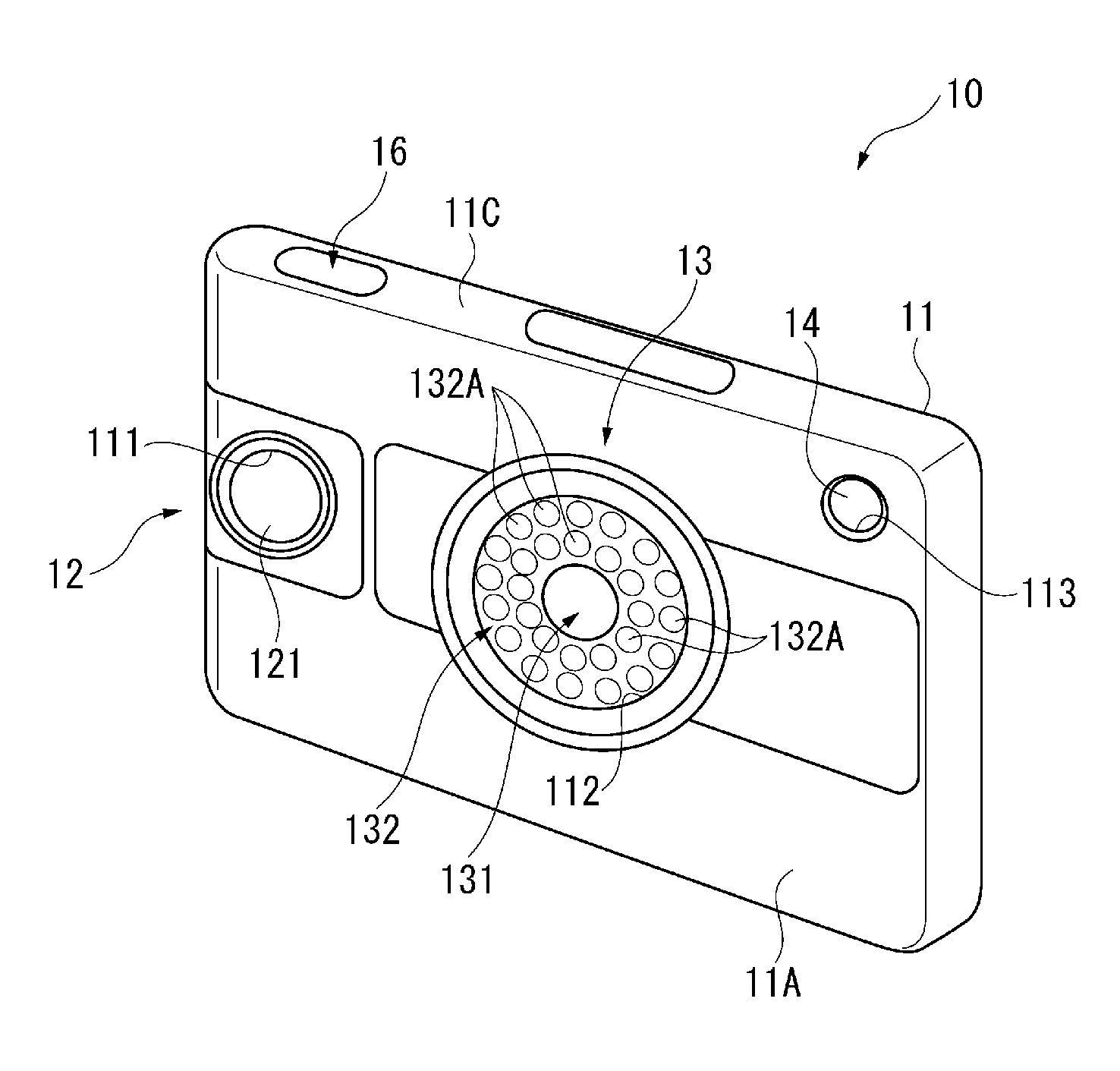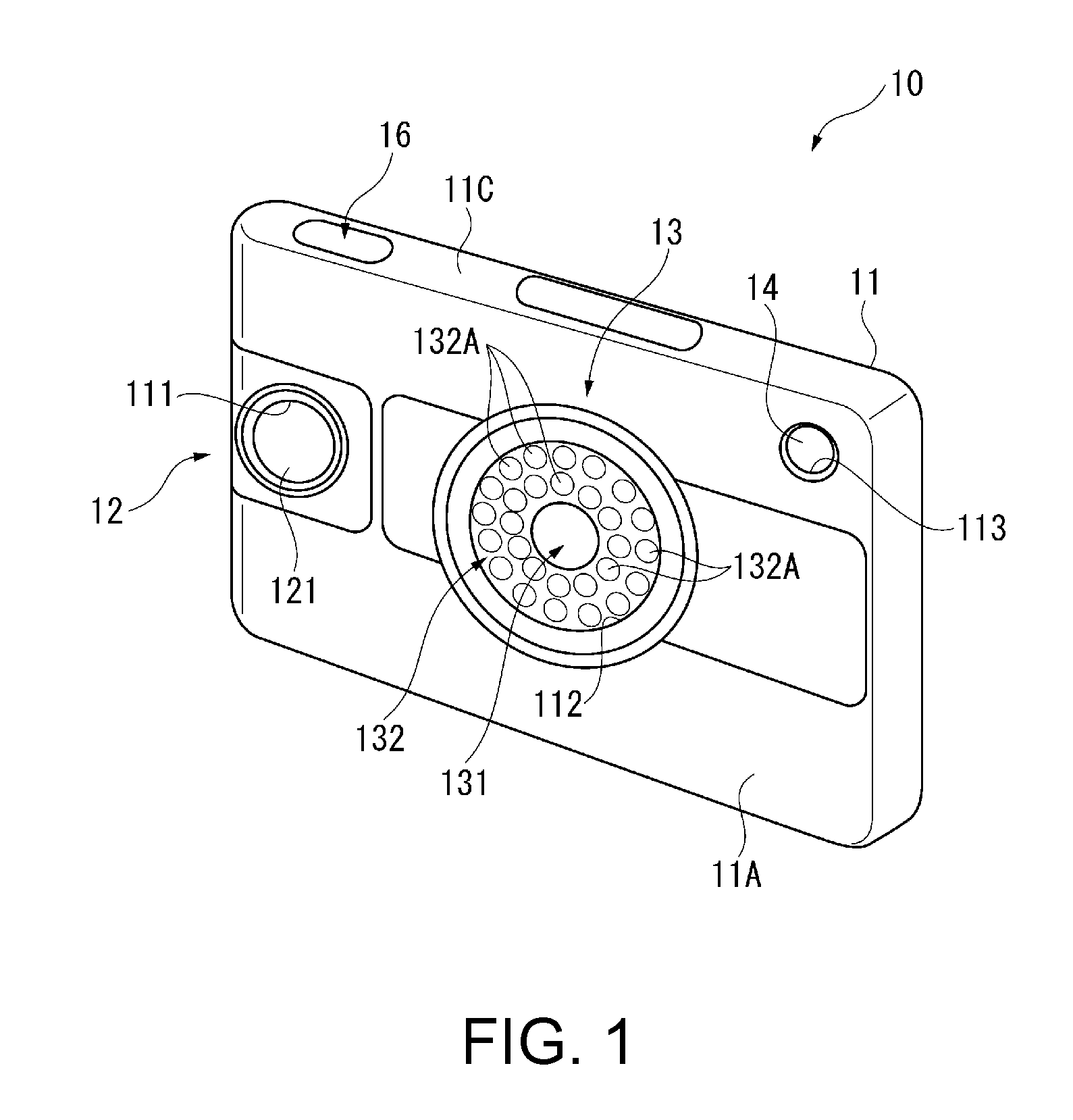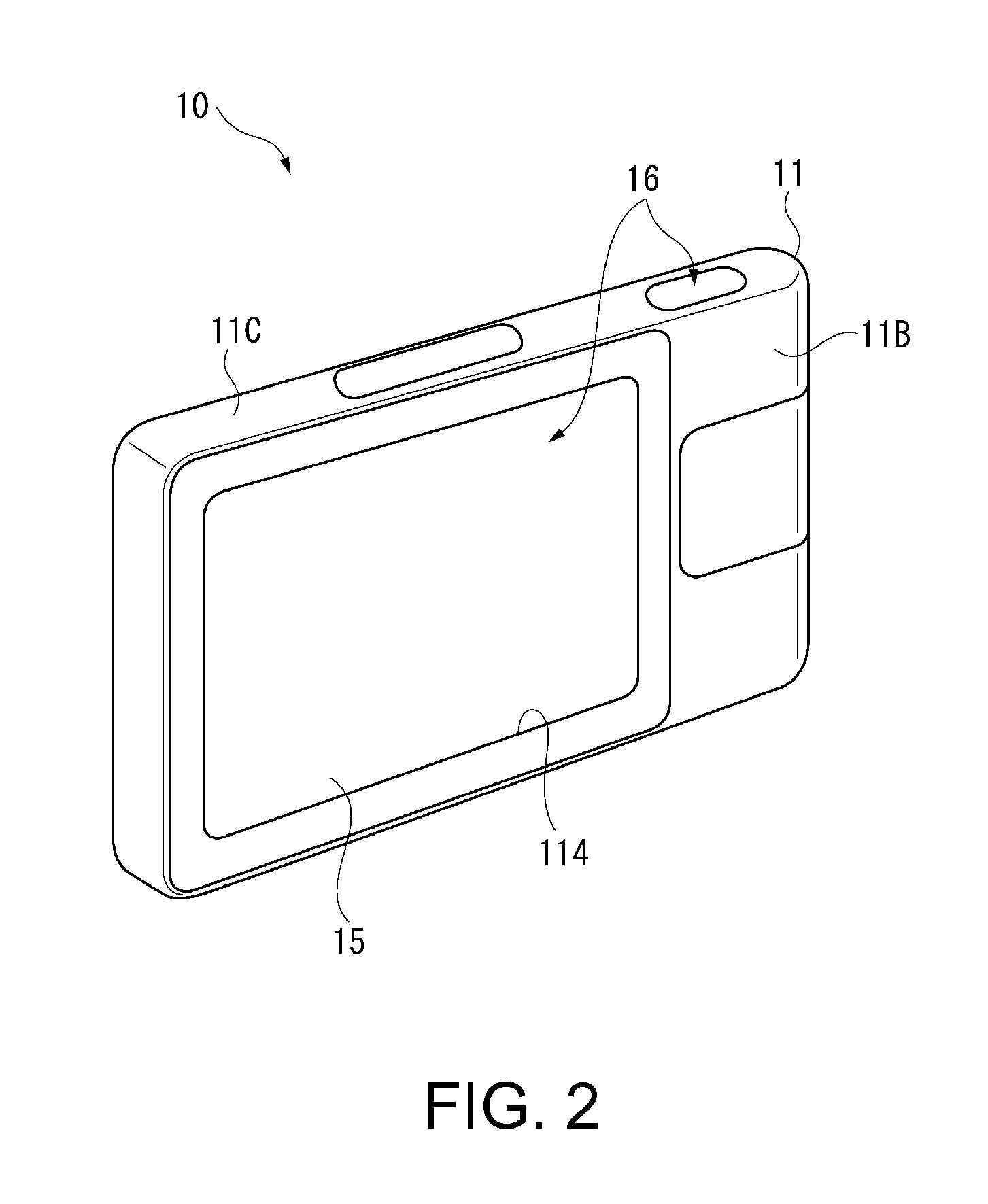Component analyzer
a technology of component analyzer and analyzer, which is applied in the field of component analyzer, can solve the problems of inability to downsize the device, inconvenient portability of the device, and large acousto-optic element used for the light source unit, and achieves the effects of easy calculation, easy portability, and easy estimation of the volume of the test obj
- Summary
- Abstract
- Description
- Claims
- Application Information
AI Technical Summary
Benefits of technology
Problems solved by technology
Method used
Image
Examples
first embodiment
Advantages of First Embodiment
[0196]In the embodiment, the component analyzer 10 includes the casing 11. In the near-infrared imaging window 112 of the casing 11, the light incident part 131 and the light source part 132 are provided, and, within the casing 11, the tunable interference filter 5 that incident light guided by the light incident part 131 enters, the imaging part 133 that receives the light extracted by the tunable interference filter 5 and takes spectroscopic images, and the control unit 17 that performs the component analysis of the test object or the like based on the spectroscopic images are provided.
[0197]In the component analyzer 10, the component analysis of the test object is performed based on the spectroscopic images, and thus, it is not necessary to bring the component analyzer 10 into contact with the test object, and breakage of the test object may be prevented. Further, even when the test object is a food, the component analysis may be contactlessly perfor...
second embodiment
Advantages of Second Embodiment
[0231]In the embodiment, the light incident part 131 includes the viewing angle limiting plate 131A. The viewing angle limiting plate 131A includes the first viewing angle limiting plate 131A1 and the second viewing angle limiting plate 131A2 having the predetermined thickness dimensions along the direction orthogonal to the fixed substrate 51 and the movable substrate 52, i.e., the light traveling direction (Z direction). Further, in the first viewing angle limiting plate 131A1, the plural light transmission parts 131A3 and light blocking parts 131A4 longitudinally extending in the X direction are alternately arranged in the Y direction, and, in the second viewing angle limiting plate 131A2, the light transmission parts 131A3 and the light blocking parts 131A4 longitudinally extending in the Y direction are alternately arranged in the X direction.
[0232]In the configuration, the light at incident angles equal to or more than the predetermined angle may...
third embodiment
[0233]Next, a third embodiment according to the invention will be explained below.
[0234]In the above described first embodiment, the mass estimation unit 197 estimates the specific gravity of the test object based on the water content ratio analyzed by the content ratio analysis unit 196A, and estimates the mass of the test object based on the estimated specific gravity and the estimated volume.
[0235]On the other hand, the third embodiment is different from the first embodiment in that the mass estimation unit 197 does not perform estimation of the specific gravity.
[0236]Note that the third embodiment has the same configuration as that of the first embodiment, and will be explained using the drawings that has been used for the first embodiment.
[0237]In the case where the test object is a food, it is known that its specific gravity takes a nearly constant value. Therefore, in the embodiment, the mass estimation unit 197 estimates the mass of the test object using the preset specific ...
PUM
 Login to View More
Login to View More Abstract
Description
Claims
Application Information
 Login to View More
Login to View More - R&D
- Intellectual Property
- Life Sciences
- Materials
- Tech Scout
- Unparalleled Data Quality
- Higher Quality Content
- 60% Fewer Hallucinations
Browse by: Latest US Patents, China's latest patents, Technical Efficacy Thesaurus, Application Domain, Technology Topic, Popular Technical Reports.
© 2025 PatSnap. All rights reserved.Legal|Privacy policy|Modern Slavery Act Transparency Statement|Sitemap|About US| Contact US: help@patsnap.com



